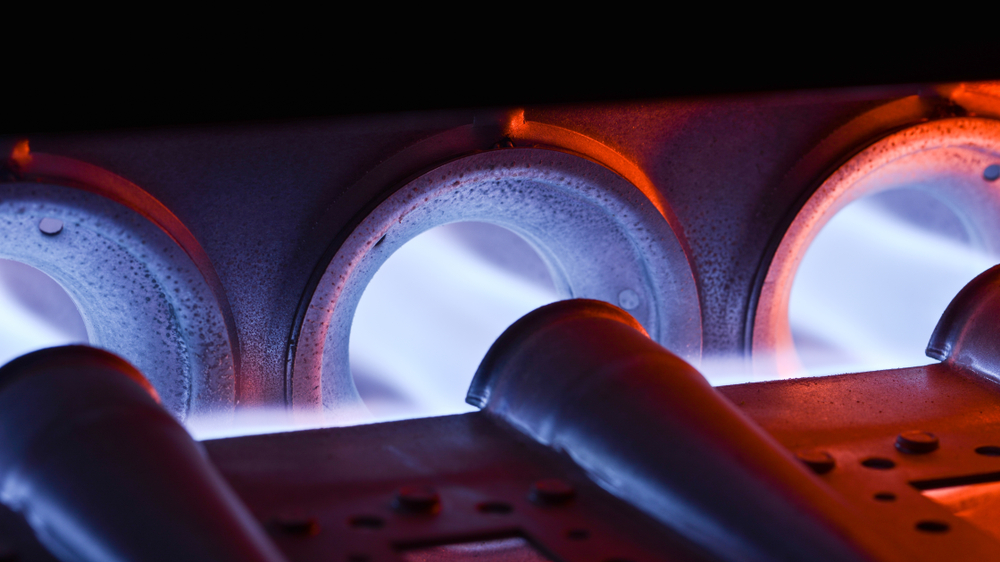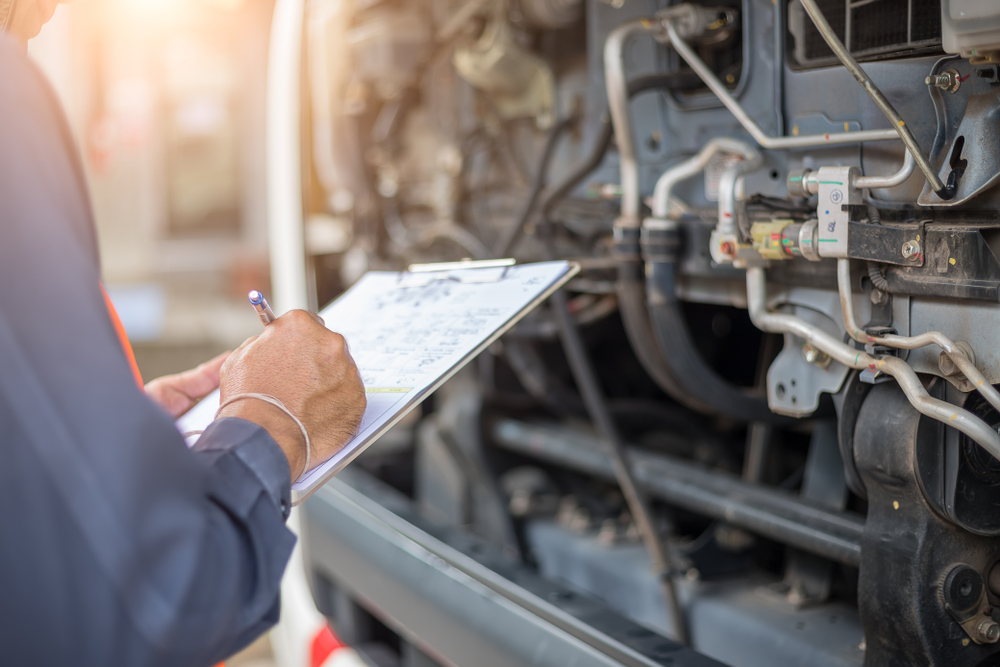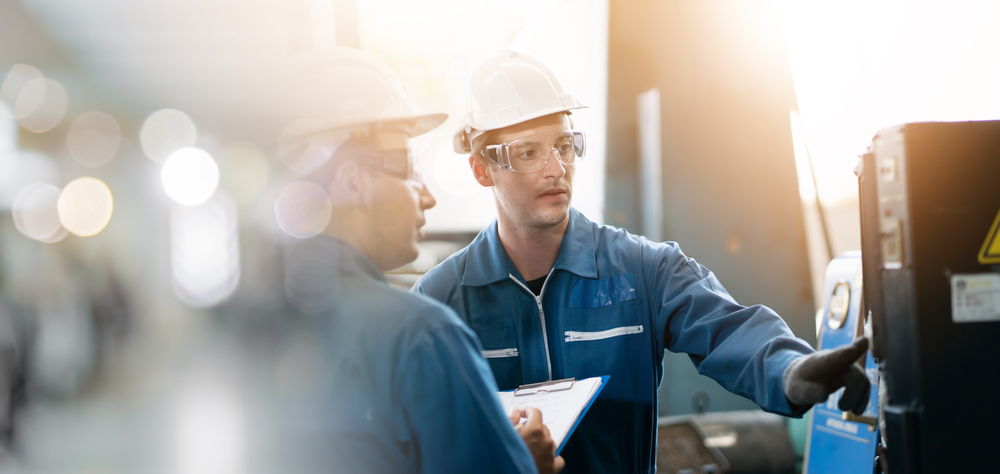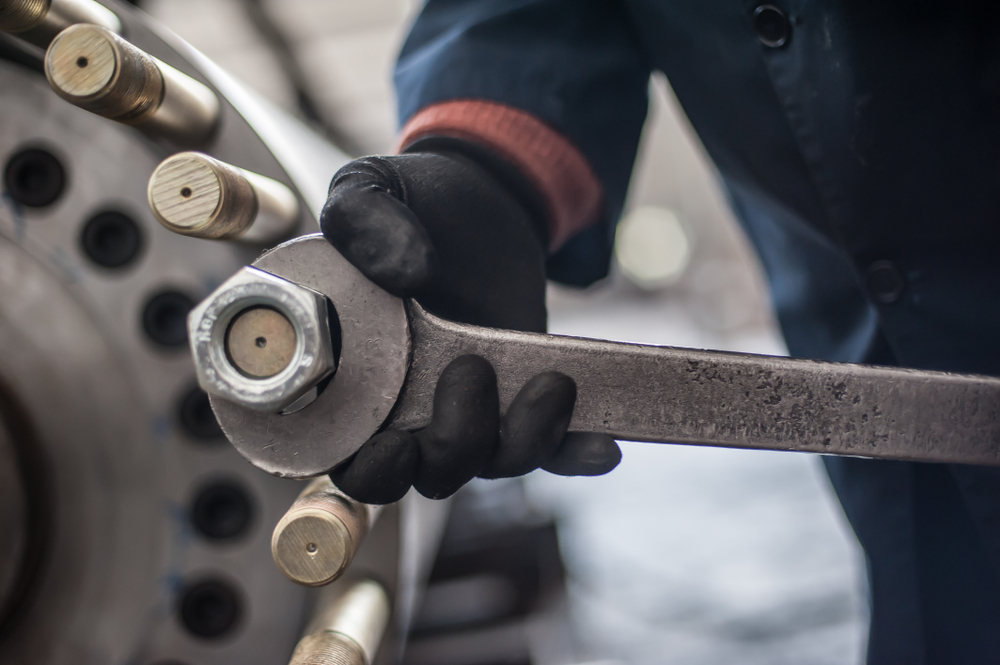Your Guide to Winterize Your Landscaping

Winterizing your landscaping is crucial for the health and longevity of your plants and the overall appeal of your property.
In this guide from Omnia360, we’ll share the steps to ensure your landscaping thrives despite the cold temperatures.
Pruning and Trimming
One of the first tasks in winterizing your landscaping is to prune and trim your plants and trees. Remove any dead or diseased branches. They are more susceptible to breakage under the weight of snow and ice. Proper pruning promotes healthier growth in the spring and reduces the risk of winter damage.
Omnia360 recommends scheduling pruning sessions in late fall or early winter to allow plants to enter dormancy without the stress of recent cuts.
Mulching for Insulation
A layer of mulch around the base of trees, shrubs, and perennial plants provides insulation and protection during winter. Mulch helps regulate soil temperature, preventing extreme fluctuations that can harm roots. A 2-4 inch layer of organic mulch, such as bark or compost, is ideal for retaining moisture and providing a buffer against freezing temperatures.
Related Post: Commercial Landscape Maintenance Guide
We want to emphasize the importance of keeping mulch a few inches away from the base of trees and plants to prevent rot and discourage pests.
Watering, Hydration, and Sprinkler Systems
Hydration is crucial for plant survival during winter, especially evergreens that continue to lose moisture through their leaves. Before the ground freezes, ensure your landscaping receives a thorough watering. Well-hydrated plants are better equipped to withstand winter stress and are more resilient to freezing temperatures.
Pay attention to the moisture levels throughout the winter, providing supplemental water during dry spells when the ground is not frozen.
Winterizing a Commercial Sprinkler System
This step is crucial to protect your system from freezing temperatures, which can lead to costly damage.
Follow these steps to winterize your commercial sprinkler system:
Shut Off the Water Supply
Locate the main shut-off valve for your sprinkler system and turn it off. This valve is usually in a heated area like a utility room or basement.
Drain the System
After turning off the water supply, drain the water from the sprinkler system. Open all the drain valves and low-point drains, allowing water to flow out. Ensure that water is completely drained from the mainline, lateral lines, and all the sprinkler heads.
Open Drain Valves
Open all the drain valves and test cocks on backflow preventers. This step is crucial for preventing water from freezing inside the components.
Use Compressed Air
Connect an air compressor to the system using a proper fitting. Gradually increase the air pressure, starting from the furthest sprinkler head from the compressor. Blow out each zone separately until no water comes out of the heads. Repeat this process for each zone in the system.
Check Pressure
Monitor the air pressure during the blowout process, ensuring it stays within the recommended range for your sprinkler system. Excessive pressure can damage the system.
Inspect and Clean Sprinkler Heads
While the system is depressurized, inspect and clean all sprinkler heads. Remove any dirt, debris, or mineral buildup that may affect the system’s performance.
Protect Backflow Preventer
Wrap the backflow preventer with insulation or a thermal blanket to shield it from extreme temperatures. This is especially important as backflow preventers are sensitive to freezing conditions.
Store or Protect Components
Remove and store above-ground components, such as backflow preventers and controllers. If removal is not possible, consider insulating these parts.
Clearly label shut-off valves, backflow preventers, and other critical components. This documentation will be helpful during the spring start-up.
Monitor Weather Conditions
If unseasonably cold weather is predicted, take additional precautions, such as adding insulation or scheduling an extra blowout.
If you’re unsure about any aspect of the process or lack the necessary equipment, contact the team at Omnia360 for a thorough winterization process.
Protecting Vulnerable Plants
Some plants, especially newly planted or tender varieties, are more susceptible to winter damage.
Protective coverings such as burlap wraps or frost blankets provide insulation while allowing air circulation, preventing heat buildup, and reducing the risk of diseases. Remove the covers during milder days to allow the plants access to sunlight and fresh air.
Snow and Ice Removal
Heavy snow can lead to bent or broken branches, especially on evergreens. Safely remove excess snow from branches using a broom to prevent damage.
Related Post: What are ‘Hard’ and ‘Soft’ Facility Management Services?
Ice accumulation is another concern, weighing down branches and causing breakage. We advise against using salt-based de-icers near plants, which can harm the soil and roots. Environmentally friendly alternatives such as sand or calcium magnesium acetate can improve traction on icy surfaces.
When to Call in the Professionals
Winterizing landscapes may be efficiently addressed by outsourcing to a facility management company.
Related Post: Why Your Landscaping Business Needs Facility Management
One of the primary challenges businesses face is a lack of expertise in crafting a tailored winterization plan. Omnia360 brings in professionals who can conduct thorough assessments, ensuring a customized winterization strategy.
Our team possesses the right tools and equipment for the job and prioritizes safety. We’ll address concerns about handling potentially hazardous tasks during winterization.
Additionally, businesses deal with time constraints, making finding the necessary hours for comprehensive winterization challenging. By outsourcing this work, companies can focus on priority work without compromising their landscaping.
Contact Omnia360 Facility Solutions for Landscape Maintenance
Winterizing your landscaping is an investment in the long-term health of your property. Contact us at (833) 360-6642. The team at Omnia360 provides around-the-clock, comprehensive services that work with your in-house team.
Troubleshooting Your Commercial Furnace – Reasons It’s Not Working

It’s cold, and if your business’s furnace goes out or is on the brink of quitting, you’re in trouble. When your commercial furnace isn’t working, it can disrupt your daily operations, impact employee morale, and cause customer dissatisfaction.
Omnia360 offers 24/7 comprehensive HVAC maintenance and repair, and we’ll share the most common reasons your furnace may not be functioning correctly and discuss troubleshooting steps.
Troubleshooting Your Commercial Furnace
When your commercial furnace malfunctions, first attempt troubleshooting to identify the issue. By addressing the problem early, you can prevent costly downtime and repairs.
Related Post: The Most Common Problems With Commercial HVAC Systems in Cincinnati, Ohio
Steps for Troubleshooting Commercial Furnaces
Check the thermostat: The thermostat is the brain of your heating system. Verify that it’s set to the correct temperature. Take the most basic steps first and ensure it’s on “Heat” mode and the fan is set to “Auto.” Replace the batteries if your thermostat is battery-operated.
Inspect the power supply: Confirm that the furnace is receiving power. Check the circuit breaker or fuse box to make sure it hasn’t tripped or blown a fuse. If everything seems fine, proceed to the next step.
Replace dirty air filters: Clogged or dirty air filters can impede airflow and strain your furnace. Change the air filters regularly, typically every 1 to 3 months, depending on usage and the type of filter.
Examine the pilot light: If you have a gas furnace, inspect the pilot light. It should be blue and steady. If it’s not lit or appears yellow, there might be a gas supply issue or a faulty pilot light. It’s essential to call a professional in such cases.
Check for obstructions: Make sure there are no obstructions in the heating system’s air ducts or vents. Obstructions can restrict airflow and lead to heating problems.
Test the safety switches: Modern commercial furnaces are equipped with safety switches that can turn off the system in case of an issue. Problems like a clogged condensate drain or a dirty flame sensor may trigger these switches. Reset it if necessary, but it’s vital to determine the root cause of the problem.
Listen for unusual sounds: Unusual sounds such as banging, whistling, or rattling could indicate mechanical issues within the furnace. If you hear these sounds, it’s advisable to turn off the furnace and contact a professional.
Common Commercial Heating Issues
To better understand why your commercial furnace isn’t working, you should know the common issues that heating systems face.
Here are some of the typical problems that can affect commercial furnaces:
Ignition problems: Faulty ignition systems can prevent your furnace from starting. This is a common issue with gas furnaces. A malfunctioning pilot light, ignition control module, or thermocouple can cause ignition problems.
Clogged air filters: Dirty or clogged air filters reduce airflow, making the furnace work harder to distribute heat. Over time, this strain can lead to overheating and system shutdowns.
Blower motor issues: The blower motor is responsible for circulating warm air throughout your facility. If it malfunctions, you may experience poor heating performance or airflow issues.
Heat exchanger damage: A cracked or damaged heat exchanger can allow carbon monoxide to escape into your facility. This is a severe safety concern and requires immediate attention.
Thermostat malfunctions: Problems with the thermostat, such as inaccurate temperature readings or a failure to communicate with the furnace, can lead to heating issues.
Pilot light and flame sensor problems: Gas furnaces rely on a properly functioning pilot light and flame sensor to ignite and maintain a steady flame. When these components malfunction, the furnace may not start or shut down prematurely.
Ductwork issues: Damaged or poorly insulated ductwork can result in heat loss, reducing the overall efficiency of your furnace. Leaks or obstructions in the ducts can disrupt the heating system’s performance.
Lack of maintenance: Regular maintenance is essential to keep your commercial furnace in good working condition. Neglecting maintenance can lead to problems, including decreased efficiency, increased energy costs, and premature system failure.
When to Call in Professional Help
While troubleshooting can resolve many common furnace issues, there are situations where professional assistance is required.
Related Post: 4 Phases of Planned HVAC Maintenance Explained
Recognizing when to call in the experts is crucial to prevent further damage and ensure the safety of your facility.
When You Should Contact a Commercial HVAC Technician
No improvement after troubleshooting: If your troubleshooting efforts do not resolve the issue, it’s time to seek professional help. Running the furnace without addressing the problem leads to further damage and increased repair costs.
Gas leaks or unusual odors: If you smell gas or detect any unusual odors, shut off your furnace immediately and evacuate the building. Gas leaks are hazardous and require immediate attention from a qualified technician.
Electrical issues: Problems with the electrical components of your furnace should be handled by a professional. This includes issues like malfunctioning thermostats, wiring problems, or issues with the control board.
Continuous cycling: If your furnace turns on and off repeatedly (short-cycling), it can indicate overheating, a malfunctioning thermostat, or a clogged air filter. A technician can diagnose and fix the problem.
Inadequate heating: If your furnace is running but not providing sufficient heat, it could be due to issues with the blower motor, heat exchanger, or other internal components. These problems require the expertise of a professional technician.
Carbon monoxide detector activation: If your facility is equipped with carbon monoxide detectors and one goes off, it may indicate a leak or improper combustion in your furnace. Evacuate the building and call for immediate professional assistance.
Age and lack of maintenance: If your furnace is reaching the end of its expected lifespan and needs to be adequately maintained, it’s advisable to have it inspected by a professional. They can assess its condition and recommend whether it’s time for a replacement.
Do You Need Furnace Repair? Contact Omnia360 Facility Solutions
A malfunctioning heating system disrupts your facility’s operations and impacts the comfort of your occupants. Know when to call in professional help to help you identify these problems early and prevent costly downtime.
Omnia360 provides around-the-clock, comprehensive, integrated facility management services that work with your in-house team. Contact us at (833) 360-6642.
What’s the Difference – Preventive vs. Predictive Maintenance

Routine maintenance services ensure the smooth operation of facilities, from commercial buildings to industrial complexes. Incorporating maintenance checks into your facility provides a productive business.
Two key strategies are preventive and predictive maintenance. In this blog, Omnia360 explains the differences between these two approaches and how they can maximize efficiency.
What’s the Difference?
Preventive maintenance is a strategy that prevents problems through regular inspections and scheduled maintenance. Predictive maintenance takes a data-driven approach, using technology to monitor equipment and facilities in real time and then using that information to plan.
Understanding Preventive Maintenance
Preventive maintenance is a proactive approach where maintenance activities are scheduled regularly, regardless of apparent equipment issues.
Related Post: 5 Preventative Maintenance Tips for Commercial Buildings
These tasks aim to prevent potential problems before they occur, ensuring that equipment and facilities remain in working condition with the aim of preventing expensive breakdowns and equipment replacement for as long as possible.
A preventative maintenance strategy includes steps like:
Scheduled inspections: Creating a detailed maintenance schedule, including routine inspections, cleaning, and minor repairs. With a structured timetable, potential issues can be identified and addressed before they escalate.
Cost control: Preventive maintenance helps control costs by minimizing unexpected breakdowns and expensive emergency repairs. By regularly servicing equipment and facilities, companies can extend their lifespan and reduce the need for replacements, ultimately saving money.
Enhanced safety: Regular inspections can uncover safety hazards, allowing for timely remediation. This proactive approach ensures a safer environment for occupants and employees within the managed facilities.
Understanding Predictive Maintenance
Predictive maintenance takes a more data-driven and condition-based approach. It uses technologies, such as sensors, IoT devices, and data analytics, to monitor the condition of equipment and facilities in real time.
Related Post: Top 5 Facility Management Trends in 2022
This approach enables maintenance teams to make informed decisions based on the actual health and performance of assets.
A predictive maintenance strategy includes steps like:
Data-driven insights: A comprehensive FM company should use sensors and monitoring systems to collect equipment and facility conditions data. This data is analyzed to identify trends and anomalies, enabling maintenance teams to predict when maintenance is needed. For example, an HVAC system has certain parameters based on how long the system runs and under what conditions. Based on these parameters, coupled with sensors that monitor energy consumption and output, the data
Reduced downtime: Predictive maintenance aims to minimize downtime by scheduling maintenance activities only when data indicates a potential issue. This approach optimizes the use of resources and reduces disruptions to facility operations.
Cost efficiency: By addressing maintenance needs precisely when they arise, companies can minimize unnecessary expenses associated with over-maintaining equipment. This can lead to substantial cost savings over time.
Improved asset performance: Predictive maintenance allows for the early detection of equipment degradation, enabling maintenance teams to replace or repair components before they fail. This leads to improved asset performance and longevity.
How to Choose the Right Approach
The choice between preventive and predictive maintenance depends on factors like the type of facility, equipment, budget, and goals. In most cases, though, a hybrid approach that combines elements of both strategies is ideal.
Omnia360 uses both preventive and predictive maintenance strategies in facility management.
Examples of a Blended Approach
Equipment importance: Critical equipment that, if it fails, could significantly impact facility operations or safety benefits from a predictive maintenance approach. Less critical equipment can still be maintained preventively.
Budget constraints: Budget considerations play a crucial role in the decision-making process. While predictive maintenance may require an upfront investment in technology, it can yield substantial long-term savings.
Facility complexity: The complexity of the facilities can influence the choice between preventive and predictive maintenance. Predictive maintenance can offer a more granular approach in environments with numerous assets.
Contact Omnia360 for Comprehensive Maintenance Services
Both preventive and predictive maintenance approaches have advantages, and the team at Omnia360 considers both to create a well-balanced system.
We provide around-the-clock, comprehensive, integrated facility management services that work with your in-house team. Contact us at (833) 360-6642.
Enhancing Efficiency: Industrial Plants & Integrated Facility Solutions

In the rapidly evolving industrial landscape, the success of manufacturing plants heavily depends on maintaining operational efficiency.
To achieve this, many industrial facilities are turning to integrated facility solutions, a comprehensive approach that streamlines maintenance, repairs, and operations under one system.
Omnia360 in Cincinnati, OH, explores the concept of integrated facility solutions and how they effectively alleviate the bottlenecks found with hiring individual contractors.
Understanding Integrated Facility Solutions
Commercial maintenance vendors offer a comprehensive approach to managing and maintaining industrial plants by consolidating various functions and services.
Related Post: What are ‘Hard’ and ‘Soft’ Facility Management Services?
These solutions combine diverse tasks such as maintenance services like landscaping and pest control, safety inspections, energy management, and more, all handled by a single, experienced provider.
By integrating these functions, industrial plants can streamline processes, improve productivity, and reduce downtime, ensuring uninterrupted operations.
Alleviating The Bottlenecks
Facility management works to relieve congestion and keep your business running smoothly. There are several benefits for industrial plants to opt for this overarching approach, including:
- A Single Point of Contact: Hiring multiple individual contractors can get confusing. Having a single “go-to” contact simplifies communication and accountability, reducing the chances of misunderstandings or delays.
- Enhanced Efficiency: Coordinating contractors can be a logistical nightmare. Remove this complexity by synchronizing tasks and optimizing your business’s workflow. This streamlined approach improves overall efficiency, allowing you to meet production targets quickly.
- Comprehensive Expertise: Industrial plants have a range of equipment and systems requiring specialized knowledge for maintenance and repairs. Relying on individual contractors often means limited expertise in specific areas. Integrated facility solutions provide access to a team of professionals with varied skill sets, covering everything from mechanical and electrical maintenance to safety compliance. This expertise ensures all aspects of the plant’s infrastructure are handled by seasoned professionals, minimizing the risk of costly errors and injury.
- Save Money: Hiring individual contractors might initially seem cost-effective, but hidden expenses add up over time. These include coordinating services, sourcing materials, and managing multiple contracts. Integrated facility solutions offer a transparent and predictable cost structure, making it easier for plants to budget expenses accurately. The long-term benefits of improved efficiency and reduced downtime lead to significant cost savings in the grand scheme.
- Preventative Maintenance: Preventive maintenance is critical in successful industrial plant management. Integrated facility solutions take this approach further by implementing predictive maintenance strategies.
Related Post: 5 Preventative Maintenance Tips for Commercial Buildings
Potential issues can be detected and addressed before they escalate into major problems. As a result, the company can avoid costly breakdowns and unnecessary downtime.
6. Compliance and Safety: Industrial plants must adhere to strict regulatory requirements, especially concerning safety and environmental standards.
Related Post: How Do Facility Management Companies Ensure Building Safety?
Hiring individual contractors may lead to inconsistencies in compliance, exposing the plant to legal and reputational risks. Commercial maintenance vendors ensure that safety protocols are consistently applied, keeping the plant in compliance and safeguarding the well-being of its workforce.
Take Advantage of 24/7 Service
Using integrated facility solutions has become an essential strategy for industrial plants seeking to optimize their operations, enhance efficiency, and reduce bottlenecks associated with hiring individual contractors.
Omnia360 Facility Solutions offers 24/7 maintenance for your plant in the larger Cincinnati area. Call us today for a free consultation: 833.360.6642.
Should You Outsource Your Equipment Maintenance?

How do you decide to keep labor in-house versus outsourcing to a vendor? Several factors come into play, such as the quality of work, the expense of maintaining employees, and the type of tasks you need to be done.
Today’s blog from Omnia360 Facility Solutions answers if you should outsource your equipment maintenance.
FM companies often work with different sourcing models: in-house, in-source, co-source, or outsource. In certain circumstances, it’s far better to simply outsource a task. But first, you’ll need to ask some questions:
What Equipment Do You Have?
Do you have specialized, proprietary equipment found nowhere else in the world? What about machines made in a factory?
For specialized or proprietary equipment, you probably have on-site mechanics who know the day-to-day operations better than anyone else. It makes sense to keep these equipment maintenance specialists in-house.
However, if you have factory-made equipment that has manuals and standard parts that anyone can research, you might consider outsourcing your equipment maintenance needs. A good mechanic knows the basic operations of many types of machines, and a facility management company like Omnia360 has connections to these specialists.
How Much Equipment Needs Regular Maintenance?
Not all of your machines run all of the time. Some operate daily. Others weekly. Maybe some machines only power up once or twice a year. Machines that run daily may require weekly maintenance.
That means you’ll need the staff to take on that type of routine. If not, outsourcing your equipment maintenance makes sense if you can’t take the staff time to perform regular maintenance.
A robust maintenance regimen makes your equipment last longer, improving your ROI the longer you own it.
Can Current Staff Fix It?
You have a dedicated staff who knows your facility inside and out. But can they perform regular equipment maintenance and repairs?
Let’s say you have some specialized equipment that needs monthly maintenance. However, you only have one or two staffers able to fix any problems with it. What happens if that staff is on vacation or out sick? What if those people leave? Who do you train for that type of equipment maintenance now?
Omnia360 can alleviate the concerns of staff absences. If you don’t have enough people with the know-how to maintain or fix your equipment, outsourcing to the right company makes sense for supplementing your in-house workers. Besides, deferring maintenance on your equipment or building, in general, can negatively impact your facility.
Are Workers Cross-Trained?
Cross-training offers a fantastic way to have in-house staff perform equipment maintenance at your facility. In many production facilities, line workers are trained to handle basic maintenance on equipment.
What happens if you have a major malfunction? Can your line workers or facility manager take care of a major breakdown that leads to hours or even days of downtime? Equipment maintenance specialists and contractors, like those supplied by Omnia360, can supplement already-trained staff when your maintenance crew needs extra help.
Contact Omnia360 for Equipment Maintenance
Omnia360 Facility Solutions can supplement your current equipment maintenance teams or outfit your entire crew. Whatever your needs, we provide a range of options for your facility. Contact Omnia360 online or call toll-free 1-833-360-6642 for more details on how we can help your team.
Our Facility Management Experts Discuss Best Practices for Facility Equipment Maintenance

Equipment maintenance is an important aspect of facility management. Whether you’ve got a factory full of specialized machinery or a few pieces of janitorial equipment, you need to incorporate best practices for maintaining your equipment. Omnia360 Facility Solutions explains how to ensure proper equipment maintenance.
Create a Plan
First, you need to make a plan and stick to it. Draw up a plan for your facility management, whether it’s weekly, monthly, or quarterly. Outline what happens on particular days, any closures or downtime, and if you need any specialty facility management staff to come to your site.
Maintain Accurate Inventory
Accurate inventory represents a crucial portion of your facility’s equipment maintenance. You can’t fix or maintain what you don’t know you have. Maintain an accurate inventory of every sprayer, mower, extruder, atomizer, and floor cleaner you have on hand. Then you can dole out the maintenance work to various departments and staffers.
Consider this vital information to include in your inventory:
- Age of equipment
- Date placed into service
- Date of last maintenance
- Model number
- Technical manuals
- Lock-out/tag-out procedures
- Department/personnel responsible for equipment maintenance
- Warranty information
- Parts guide
- Performance characteristics
Make Information Easily Accessible
Every bit of information on your equipment should be easily accessible to those who need it for easy facility management. That’s where an accurate inventory comes into play. Think about having this information behind a secure login accessible via your internal web resources. Make this information available on smartphones, mobile devices, laptops, computers, and even on the equipment display screens. Having a secure login may prevent security threats and/or information leaks.
Schedule Preventive Maintenance
Preventive maintenance is absolutely essential when it comes to the longevity of your facility’s equipment. Schedule regular preventive maintenance to check up on every piece of equipment. Preventive maintenance increases the lifespan of your machinery, thereby reducing your overall costs when purchasing new equipment. Make sure your system alerts the necessary personnel when preventive maintenance is upcoming, so you can plan for it.
Contact Omnia360 for Integrated Facility Management
Overall, your maintenance plan should trigger automatic alerts when it comes to scheduling, warranty, and parts ordering/inventory. The more automated your system, the easier it is for your teams to maintain your equipment. Contact Omnia360 online or call toll-free 1-833-360-6642 for more details on how we can help you with facility management.